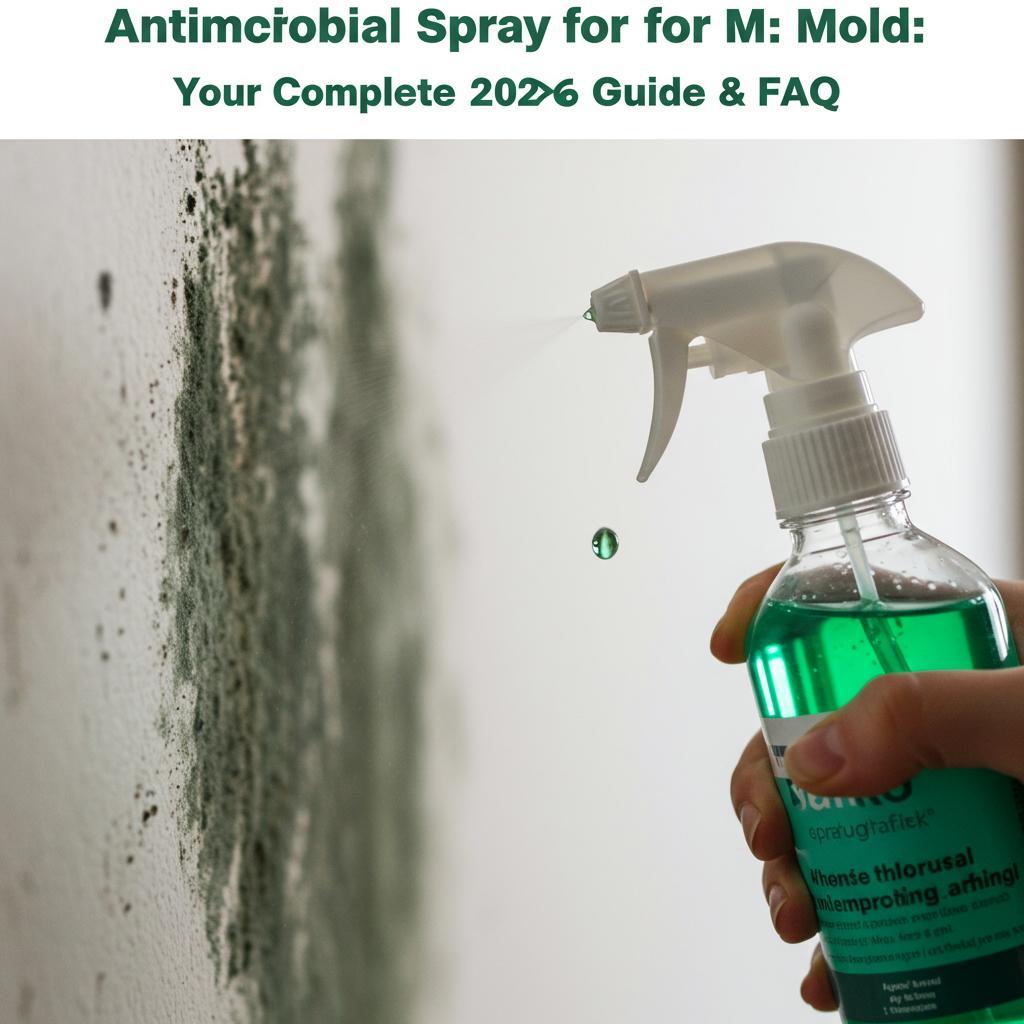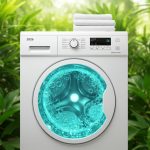[Check Latest Arrivals antimicrobial spray for mold on Amazon.]
# Antimicrobial Spray for Mold: Your Complete 2026 Guide & FAQ
Mold. Just the word itself can send shivers down your spine, right? Nobody wants it in their home. It’s unsightly, can cause health problems, and let’s be honest, it’s just plain gross. If you’re reading this, chances are you’re battling a mold issue, or you’re wisely preparing for the possibility. And that’s where antimicrobial sprays for mold come in.
In this comprehensive guide, consider me your friendly, knowledgeable friend who’s already waded through the confusing world of mold sprays. I’ve researched the ingredients, safety, and effectiveness of numerous products, and I’m armed with the information you need to tackle that mold head-on. We’ll cover everything from frequently asked questions to best practices to ensure a mold-free and healthy home in 2026. Let’s get started!
[Explore Top Rated antimicrobial spray for mold on Amazon.]
## What Exactly *Is* Mold and Why Is It Growing in My House?
Before we dive into *antimicrobial spray for mold* and how to use it, let’s understand what we’re fighting. Mold is a type of fungus that thrives in damp, humid environments. It reproduces by releasing spores, which are like tiny seeds that float through the air. When these spores land on a surface with enough moisture, they begin to grow.
So, why is it growing in *your* house? Here are the most common culprits:
* **Leaks:** Leaky roofs, pipes, or windows are prime breeding grounds for mold. Even small, slow leaks can provide enough moisture for mold to flourish.
* **Humidity:** Excess humidity, especially in bathrooms, basements, and poorly ventilated areas, creates a favorable environment for mold growth.
* **Flooding:** Even a small flood can soak porous materials like drywall and carpets, leading to mold growth if not dried quickly and thoroughly.
* **Condensation:** Condensation on windows, walls, or pipes can provide enough moisture for mold to take hold.
* **Poor Ventilation:** Lack of proper ventilation traps moisture indoors, increasing humidity levels and promoting mold growth.
Identifying and addressing the source of moisture is crucial to preventing future mold problems. Using an *antimicrobial spray for mold* can help eliminate existing mold, but it won’t solve the underlying issue.
[Explore Top Rated antimicrobial spray for mold on Amazon.]
## Antimicrobial Spray for Mold: Your First Line of Defense
Okay, so you’ve identified the moisture source and you’re ready to tackle the mold itself. That’s where *antimicrobial spray for mold* comes into play. These sprays are designed to kill mold and prevent it from returning. They work by penetrating the mold’s cell walls and disrupting its growth cycle.
But here’s the thing: not all antimicrobial sprays are created equal. Some are more effective than others, and some contain harsh chemicals that can be harmful to your health. That’s why it’s important to choose wisely.
[Explore Top Rated antimicrobial spray for mold on Amazon.]
## How to Choose the Right Antimicrobial Spray for Mold in 2026
With so many options available, selecting the right *antimicrobial spray for mold* can feel overwhelming. Here are some key factors to consider:
* **Ingredients:** Pay close attention to the ingredients list. Look for sprays that contain EPA-registered antimicrobial agents like thymol (from thyme oil), hydrogen peroxide, or quaternary ammonium compounds. Avoid sprays with harsh chemicals like bleach, which can damage surfaces and irritate your lungs.
* **Surface Compatibility:** Check the product label to ensure the spray is safe for the surfaces you need to treat. Some sprays can stain or damage certain materials.
* **Safety:** Consider the safety of your family and pets. Opt for sprays that are labeled as low-VOC (volatile organic compounds) and non-toxic. Always wear appropriate protective gear, such as gloves and a mask, when using any antimicrobial spray.
* **Effectiveness:** Read online reviews and look for sprays that have a proven track record of killing mold and preventing regrowth.
* **Coverage Area:** Determine the amount of spray you need based on the size of the affected area. Some sprays offer more coverage than others.
* **Odor:** Some antimicrobial sprays have a strong odor. If you’re sensitive to smells, look for sprays that are labeled as fragrance-free or have a pleasant scent.
[Explore Top Rated antimicrobial spray for mold on Amazon.]
## Step-by-Step Guide: Using Antimicrobial Spray for Mold Effectively
Now that you’ve chosen the right *antimicrobial spray for mold*, it’s time to put it to work. Here’s a step-by-step guide to ensure you get the best results:
### 1. Prepare the Area
Before you start spraying, prepare the area by removing any loose debris or mold growth with a brush or vacuum. Cover any nearby surfaces that you don’t want to get sprayed. It’s crucial to control the moisture source that led to mold growth in the first place. If it’s still leaking, the mold will return.
### 2. Protect Yourself
Always wear appropriate protective gear, including gloves, a mask or respirator, and eye protection. This will help protect you from exposure to mold spores and chemicals.
### 3. Apply the Spray
Shake the *antimicrobial spray for mold* well and apply it liberally to the affected area. Be sure to saturate the mold and the surrounding surfaces to ensure complete coverage. Follow the manufacturer’s instructions for application, including the recommended distance and spray pattern.
### 4. Allow Drying Time
Allow the spray to dry completely before touching or disturbing the treated area. The drying time will vary depending on the product and the humidity level. Check the manufacturer’s instructions for specific drying times. Proper drying helps ensure the *antimicrobial spray for mold* fully eradicates the spores.
### 5. Reapply (If Necessary)
In some cases, you may need to reapply the spray to completely eliminate the mold. This is especially true for stubborn or heavily infested areas. If you’re not sure whether to reapply, consult the product label or a mold remediation professional.
### 6. Ventilate the Area
After applying the spray, ventilate the area by opening windows or using a fan. This will help to remove any lingering odors and promote drying. If possible, allow the treated area to air out for at least 24 hours.
### 7. Monitor for Regrowth
Keep an eye on the treated area for any signs of mold regrowth. If you see mold returning, reapply the spray or consult a mold remediation professional. Remember to address the underlying moisture issue to prevent future mold problems.
[Explore Top Rated antimicrobial spray for mold on Amazon.]
## Tools for the Job: Recommended Antimicrobial Sprays for Mold
Okay, let’s get specific. Here are a couple of *antimicrobial spray for mold* that I’d recommend, depending on your needs.
**1. Concrobium Mold Control:** This is a popular choice for a few reasons. It’s EPA-registered, it doesn’t contain bleach, ammonia, or VOCs, and it’s effective on a wide range of surfaces including drywall, wood, concrete, and fabric.
* **Key Features:** Kills and prevents mold, no harsh chemicals, odor-free.
* **Why We Like It:** Concrobium works by crushing mold spores as it dries, preventing it from growing back. It’s a safe and effective solution for minor mold problems and proactive prevention. Because it’s less harsh than alternatives, it’s safer for family and pets.
**2. RMR-141 Disinfectant and Cleaner:** If you’re dealing with a more severe mold problem, RMR-141 is a great option. This is an EPA-registered disinfectant that is effective against a wide range of bacteria, viruses, and fungi, including mold.
* **Key Features:** Hospital-grade disinfectant, eliminates odors, prevents mold regrowth.
* **Why We Like It:** RMR-141 is a powerful disinfectant that can kill mold quickly and effectively. It’s also great for eliminating odors caused by mold. Because of its strength, follow the instructions *carefully.*
Always remember to follow the manufacturer’s instructions and take necessary precautions when using these products.
[Explore Top Rated antimicrobial spray for mold on Amazon.]
## Pro-Tips and Frequently Asked Questions About Antimicrobial Spray for Mold
Here are a few extra tips and answers to common questions to help you on your mold-fighting journey:
* **Can I Use Antimicrobial Spray on All Surfaces?**
No, some antimicrobial sprays are not suitable for all surfaces. Always check the product label to ensure the spray is compatible with the surface you need to treat.
* **How Often Should I Apply Antimicrobial Spray for Mold?**
The frequency of application will depend on the product and the extent of the mold problem. In general, it’s best to apply the spray as soon as you notice mold growth and repeat as needed. If the mold keeps returning, you may need to address the underlying moisture issue.
* **Is It Safe to Use Antimicrobial Spray Around Pets and Children?**
While many *antimicrobial spray for mold* are labeled as low-VOC or non-toxic, it’s always best to take precautions when using these products around pets and children. Keep them out of the area during application and allow the spray to dry completely before allowing them to return.
* **Can I Use Bleach Instead of Antimicrobial Spray?**
Bleach is a common household cleaner that can kill mold, but it’s not the best solution. Bleach only kills surface mold and doesn’t penetrate porous materials. It can also damage surfaces, irritate your lungs, and create toxic fumes when mixed with other chemicals. It’s generally better to use an EPA-registered *antimicrobial spray for mold.*
* **The Mold Came Back! What Do I Do?**
If the mold keeps returning, it’s a sign that you haven’t addressed the underlying moisture issue. You may need to repair leaks, improve ventilation, or dehumidify the affected area. In some cases, you may need to consult a mold remediation professional.
* **When Should I Call a Professional?**
If you have a large mold problem (more than 10 square feet), if you’re experiencing health problems related to mold exposure, or if you’re not comfortable handling the mold yourself, it’s best to call a mold remediation professional. They have the expertise and equipment to safely and effectively remove mold from your home.
[Explore Top Rated antimicrobial spray for mold on Amazon.]
## Conclusion: Your Mold-Free Future Starts Now
Congratulations! You’re now equipped with the knowledge and tools you need to tackle mold and keep your home healthy and mold-free. Remember, using an *antimicrobial spray for mold* is often just the first step. Identifying and addressing the underlying moisture issues is crucial for long-term prevention. So, take a deep breath, grab your spray, and get to work! Your mold-free future starts now.
[Shop Budget-Friendly antimicrobial spray for mold on Amazon.]






![Purell Soap Dispenser: Which is Best for Your Home or Office? [2026 Guide]](https://www.besthomecleaningreviews.com/wp-content/uploads/2025/10/514-purell-soap-dispenser-which-is-best-for-your-home-or-office-2026-guide-150x150.png)



